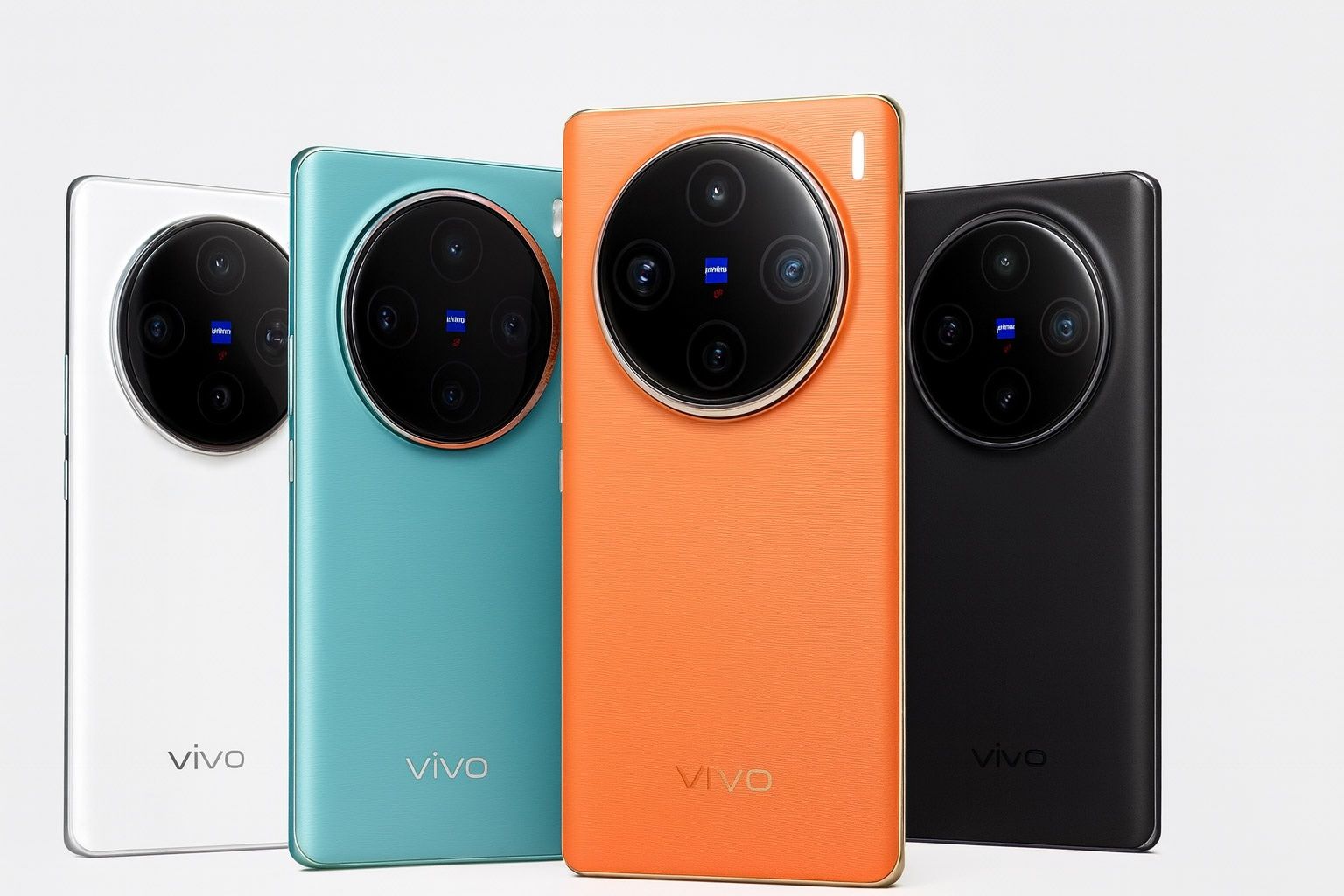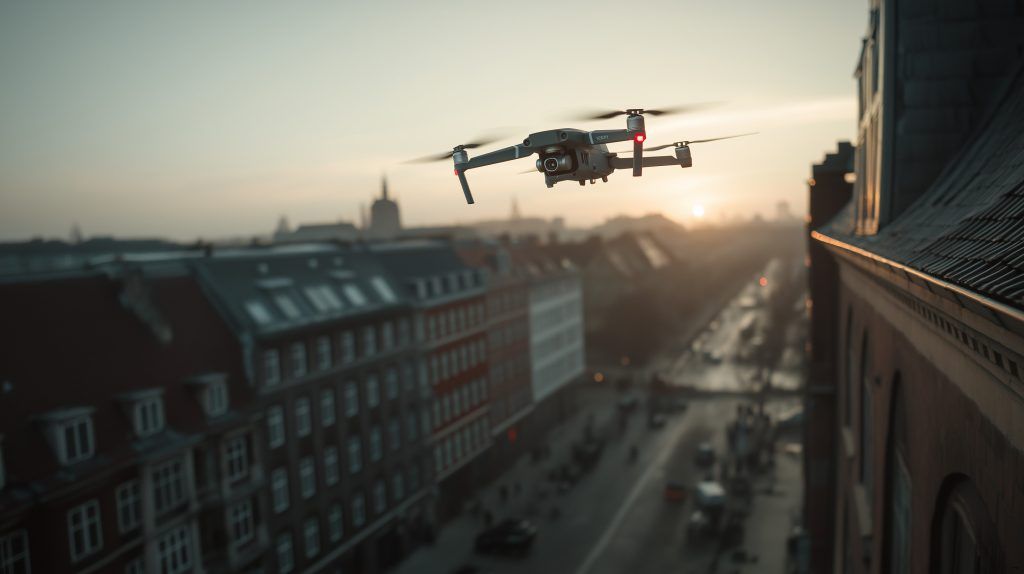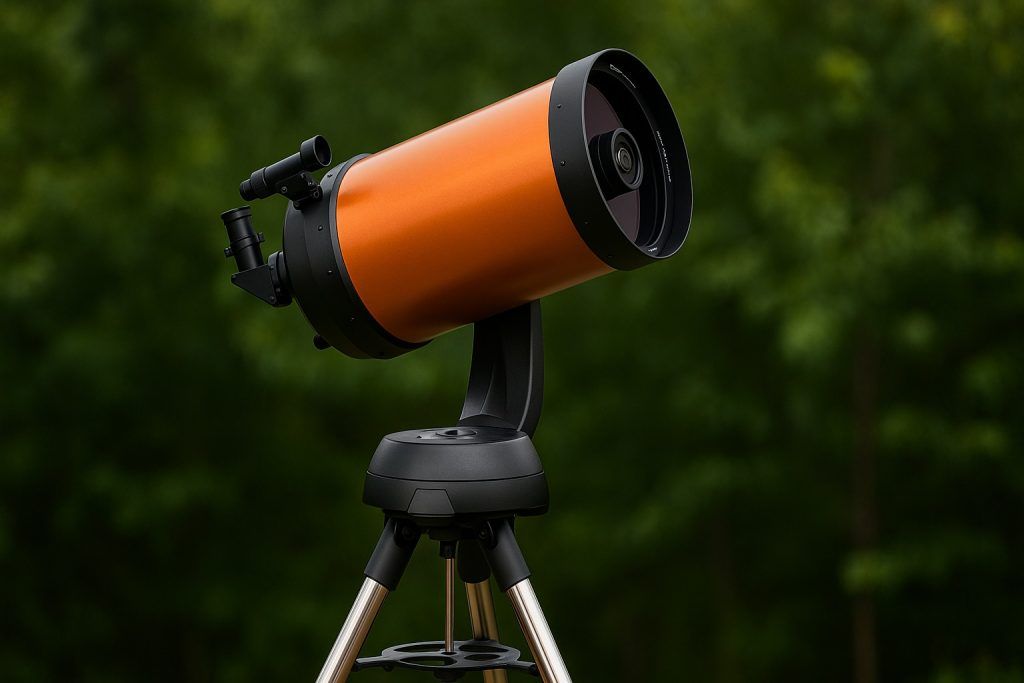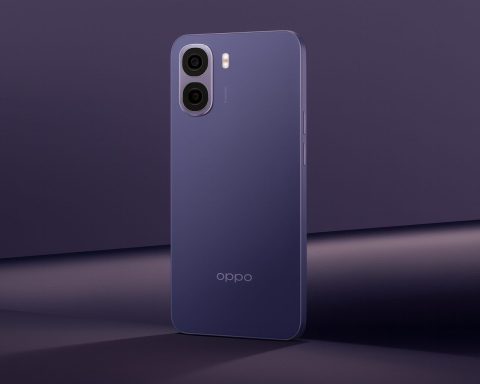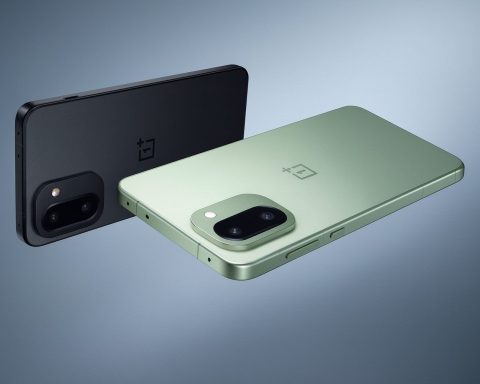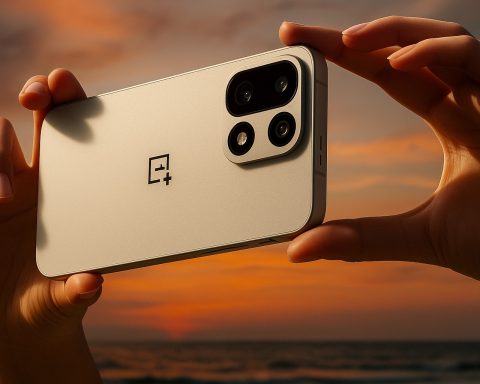- Vivo X100 Pro+ features a 5,400 mAh battery, 100W wired charging, 50W wireless charging, Snapdragon 8 Gen 3, 16GB LPDDR5T RAM, up to 1TB UFS 4.0 storage, a V3 imaging chip, and Zeiss co-engineered cameras.
- Xiaomi 15 Ultra uses a 1-inch-type 50MP main camera (Sony LYT900/IMX989), a 50MP ultra-wide, a 50MP 3× tele, and a 200MP periscope with lossless zoom up to 17.3×, tuned by Leica.
- Oppo Find X8 Ultra has a 50MP 1-inch main sensor with Hasselblad tuning, plus 50MP ultra-wide, 50MP 3× tele, and a 50MP 6× periscope with a two-stage shutter and XPAN mode.
- Xiaomi 15 Ultra is confirmed to support satellite calling and messaging in China, with two versions enabling voice and two-way text via Tiantong and Beidou satellites.
- The Xiaomi 15 Ultra global launch was planned for late February to early March 2025, aligning with MWC 2025.
- Vivo X100 Pro+ was launched in China in May 2024, with uncertain global availability for the Ultra model.
- Oppo Find X8 Ultra launched in China around April 2025, with no confirmed global release.
- Display details include Vivo X100 Pro+ curved 6.78-inch OLED with QHD+ 120Hz, Xiaomi 15 Ultra 6.73-inch curved LTPO AMOLED at 3200×1440 and 1–120Hz, and Oppo Find X8 Ultra 6.82-inch flat LTPO AMOLED at 3168×1440 and 120Hz with up to 2,500 nits.
- Battery capacities are 6,100 mAh for the Oppo Find X8 Ultra, 5,400 mAh for the Vivo X100 Pro+, and 5,410 mAh for the Xiaomi 15 Ultra.
- Software and updates vary: Vivo uses Android 14 with OriginOS 4 (China) or Funtouch OS 14 (global) with about 3 years of major updates; Xiaomi uses HyperOS on Android 14/15 with about 4 Android version updates planned; Oppo uses ColorOS 14 on Android 14/15 with a promise of 4 years of Android updates and 5 years of security patches.
The ultra-flagship smartphone arena is heating up with three titans from China: Vivo’s X100 Pro+, Xiaomi’s 15 Ultra, and Oppo’s Find X8 Ultra. Each of these devices pushes the boundaries in design, performance, and especially camera innovation, packing cutting-edge hardware and features. In this in-depth comparison, we’ll explore how they stack up in design and display, performance, camera systems, battery and charging, software experience, connectivity and extras, as well as pricing and release details. Whether you’re a spec enthusiast or a photography buff, these top-tier phones promise to deliver. Let’s dive into the ultimate flagship showdown.
Design and Display
All three phones embrace premium materials and bold designs, but each has its own flair. Xiaomi’s 15 Ultra takes a cue from classic cameras with a Leica-inspired aesthetic – leaked renders show a distinctive duo-tone back (white and textured black) that makes the phone resemble a Leica camera, complete with a large round lens module. The quad-camera array is housed in that big circular bump, emblazoned with the Leica logo, reinforcing Xiaomi’s photography focus. In hand, the Xiaomi 15 Ultra is said to have a quad-curved 6.73-inch display (curved on all sides) framed by a sturdy aluminum chassis. This gives it a comfortable feel despite the sizable camera hump. The screen itself is an LTPO AMOLED with 3200×1440 resolution capable of an adaptive 1–120Hz refresh rate for buttery-smooth visuals. Xiaomi also touts extremely high brightness (reportedly up to 2, or even 3,000+ nits peak) for excellent outdoor visibility. In short, Xiaomi’s design is all about camera-centric style and a top-notch display to match.
The Vivo X100 Pro+ (also referred to as the X100 Ultra in some reports) continues Vivo’s partnership with Zeiss and sports a sleek yet striking look. Leaked sketches indicate a curved-edge 6.78-inch OLED display with almost non-existent bezels – if the final design matches the leak, the X100 Pro+ could “break all records” for thin bezels, essentially all-screen up front. The display is expected to be QHD+ (1440p) at 120Hz refresh rate, delivering vibrant colors and sharp detail. A small centered punch-hole houses the selfie camera. On the back, Vivo uses a prominent “oreo” circular camera island in the center, proudly marked with ZEISS branding. This module contains multiple lenses (more on those later) and an LED flash, arranged in an asymmetrical “Sunset Eclipse” layout as Vivo calls it. The phone’s build features an aluminum frame and is IP68-rated for dust/water resistance. Vivo is offering the X100 Pro+ in both glass and vegan leather finishes – three models will have glass backs (white, black, and blue), while an orange variant will use a leatherette back for a classy touch. Overall, Vivo’s design language is elegant and ergonomic, with the curved display and premium materials, yet with a flair of color in the special edition.
Oppo’s Find X8 Ultra takes a slightly different approach – it ditches the retro two-tone leather styling that last year’s Find X7 Ultra had, opting instead for a clean modern look. The Find X8 Ultra comes with a flat 6.82-inch LTPO AMOLED display that many users will appreciate (no curved edges here). This screen still packs a 3168×1440 (2K) resolution and a 120Hz refresh rate, so you’re not sacrificing any sharpness or smoothness by going flat. In fact, Oppo’s panel is extremely bright, reaching up to 2,500 nits peak brightness for HDR content – making it one of the brightest displays on the market. The phone’s sides are gently rounded for comfort, and the back features a matte finish that resists fingerprints. Oppo also includes IP68/69 dust and water resistance on the X8 Ultra, meaning it can survive not just splashes but even strong jets of water. The camera module on the back is large but toned-down in styling – it’s a more traditional glossy island housing the multiple lenses (Oppo’s partnership with Hasselblad continues, though the branding is subtle). Notably, the Find X8 Ultra includes some unique hardware touches: an ultrasonic in-display fingerprint reader (a faster, more reliable upgrade over the optical sensor in the previous generation) and a new configurable “Alert Slider” replacement button – more on that later. In summary, Oppo’s design is sleek and practical, with a fantastic flat display and robust build quality that make it stand out.
Display quality on all three is top-tier. You’re getting AMOLED panels around 6.7–6.8 inches with QHD+ resolution and 120Hz adaptive refresh on each of these flagships. Colors, contrast, and viewing angles should be excellent across the board. Subtle differences include the curvature (curved on Vivo and Xiaomi vs flat on Oppo) and brightness – Oppo’s and Xiaomi’s screens push extremely high brightness for outdoor readability. HDR10+ support is a given, and all use LTPO tech for dynamic refresh rate scaling to save power. In short, no matter which device you choose, you’re getting a stunning display and a premium design; it’s more a matter of whether you prefer curved edges and unique finishes (Vivo’s leather, Xiaomi’s Leica-themed look) or a flat display with understated style (Oppo).
Performance and Hardware
When it comes to raw performance, these phones pack the very best silicon available in their respective launch windows. The Vivo X100 Pro+ is powered by Qualcomm’s Snapdragon 8 Gen 3 chipset, a top-tier 4nm SoC from late 2023. This is an octa-core processor that was Qualcomm’s flagship at the time, offering a huge leap in CPU and GPU speed over previous generations. Vivo pairs the chip with LPDDR5T RAM (16GB) across all models – LPDDR5T is an even faster variant of LPDDR5X – ensuring rapid memory bandwidth. Storage is the latest UFS 4.0, configurable up to 1TB on the top model, so you’ll have both speed and plenty of space for 4K videos and photos. In terms of benchmarks, the X100 series has proven its chops; even the non-Qualcomm Vivo X100 (running Dimensity 9300) managed over 2.2 million points in AnTuTu tests, rivaling the best scores from Qualcomm-based phones. With the Snapdragon 8 Gen 3 on the Pro+, performance will be nothing short of elite – expect buttery smooth gaming and instant app launches. Vivo also includes advanced cooling and a dedicated V3 imaging chip for the camera, offloading image processing from the main SoC, which indirectly helps sustained performance.
The Xiaomi 15 Ultra and Oppo Find X8 Ultra step things up with Qualcomm’s next-gen platform, the Snapdragon 8 “Elite”. This chipset, debuting in late 2024, is essentially the Snapdragon 8 Gen 4 (though Qualcomm branded it as “Elite”) – a cutting-edge 3nm processor that powers many 2025 flagships. Xiaomi confirmed the 15 Ultra would ship with the Snapdragon 8 Elite, leveraging its AI and performance improvements over Gen 3. Oppo likewise uses the same chip in the Find X8 Ultra, so both are on equal footing here. In practice, the Snapdragon 8 Elite provides an incremental boost: roughly ~15% faster CPU and GPU and better power efficiency compared to the 8 Gen 3, along with enhanced AI capabilities. Early usage shows it performs as expected for a high-end chip – in other words, anything you throw at these phones will run flawlessly. As one reviewer noted for the Find X8 Ultra, it “handles with ease” everything, hitting the benchmark numbers you’d anticipate from a 2025 flagship chip.
Memory and storage are generous on both. The Xiaomi 15 Ultra comes in configurations up to 16GB of LPDDR5x/5T RAM and 1TB UFS 4.0 storage (the global model is rumored to launch only in a maxed-out 16GB+512GB trim for simplicity). The Oppo Find X8 Ultra similarly offers up to 16GB RAM and 512GB storage (Giztop lists 12GB/256GB as base and 16GB/512GB as the top option). None of these devices support microSD expansion – but with half a terabyte or more on board, storage shouldn’t be an issue. It’s also worth noting that all three have fast storage and memory that help with app loading and multitasking. In day-to-day use, expect extremely snappy performance: flagship Android at its finest. From high-fidelity 3D games to multitasking with split-screen apps, these phones won’t break a sweat. Even extended gaming sessions or 4K video editing are within reach thanks to improved thermals and the efficiency of the new chips.
One slight differentiator: the Vivo X100 Pro+’s Snapdragon 8 Gen3 is technically one generation behind the “8 Elite” in the Xiaomi and Oppo. However, Gen3 is still a beast of a chip – it was the same SoC that powered many 2024 flagships (like the Galaxy S24 series). The difference in real-world use will be minor; all three chips deliver desktop-class performance in a phone. Unless you’re counting frames in the most demanding games or running synthetic benchmarks, you’ll find all three devices equally fast and responsive.
Camera Systems and Innovations
If there’s one category where these Ultra flagships truly earn their names, it’s the camera. All three phones come loaded with multi-sensor camera systems co-engineered with renowned photography brands, and each brings some unique innovations to mobile imaging. Let’s break down the setups:
- Vivo X100 Pro+ (X100 Ultra): Vivo has a pedigree of excellent camera phones, and the X100 Pro+ raises the bar further. It features a quad-camera array developed with Zeiss. According to credible leaks, the setup includes a 50MP main camera (rumored Sony sensor, around a 1-inch type for huge light-gathering, with OIS stabilization), a 50MP ultra-wide camera (Sony IMX589) for expansive shots, a 50MP portrait telephoto (IMX758) optimized for 2x zoom and creamy bokeh, and the headline-grabber – a 200MP periscope telephoto lens (Samsung’s ISOCELL HP3 sensor) capable of 10× optical zoom. This periscope lens is something special: with such high resolution (200 megapixels), it can achieve lossless zoom at long range and possibly even step through intermediate focal lengths by cropping. Vivo is essentially going for a super-telephoto capability here, far beyond the typical 5× zoom. Early info suggests this periscope can reach up to 10x optical and use the high resolution for clean zoom at 15x or more digitally – ideal for wildlife or sports shots where you’re far from the subject. The entire system is augmented by ZEISS T✻ lens coating to reduce flare and reflections, and Vivo’s custom V3 imaging processor which powers advanced night modes and computational tricks. We expect features like Vivo’s famed Astro Mode for starry sky shots and Zeiss-style portrait bokeh simulations to be on board. With four focal lengths at your disposal (ultrawide, standard, portrait, super-tele), the X100 Pro+ should be a photographer’s dream. Vivo has proven low-light prowess in the past, and the X100 Pro+ will likely continue that – the large main sensor and OIS, combined with image stacking from the V3 chip, should yield excellent night photos. All cameras benefit from Vivo’s partnership with Zeiss for color tuning and lens design. As a nice touch, Vivo includes an ultrasonic under-display fingerprint which doubles as a quick shutter button in some camera modes (thanks to its large surface area), making it easier to snap a photo with a tap anywhere on the fingerprint area. And yes, the phone can record up to 8K video on the main camera, with gyro stabilization to keep footage steady. Overall, the X100 Pro+ aims to be a true DSLR-rival in your pocket, with a particularly strong suit in zoom and portrait photography.
- Xiaomi 15 Ultra: Xiaomi’s Ultra line has been all about pushing camera tech, and the 15 Ultra is no exception – it’s branded as an “imaging flagship” and even Xiaomi’s CEO has hyped its camera capabilities with sample shots. The 15 Ultra also sports a quad-camera setup, with a slightly different philosophy than Vivo’s. It has a 50MP primary camera featuring a 1-inch type sensor (reportedly the Sony LYT900, similar to or the same as the IMX989 used previously) with an f/1.63 aperture [1]. This huge sensor, combined with Leica’s lens expertise, is built for phenomenal low-light performance and natural depth of field. Interestingly, Xiaomi removed the variable aperture that the previous 13 Ultra had – the 15 Ultra sticks to a fixed wide-open aperture, likely to simplify the system and improve sharpness. In practice, this means you won’t be able to switch the aperture for deeper depth of field, but the default f/1.6 should be bright enough for almost any scenario. Backing the main shooter are three more cameras: a 50MP ultra-wide (approximately 14mm, f/2.2) for group shots or landscapes, a 50MP 3× telephoto (around 70mm equivalent, with OIS) for medium zoom and portraits, and a cutting-edge periscope telephoto which is around 4.3× optical zoom but with a 200MP sensor behind it. This periscope is arguably the star of the show – Xiaomi and Leica devised an “end-to-end” optics system here with multiple lens elements (marketed as “Ultra-Pure Leica optics”). The 200MP periscope enables an extremely flexible zoom range: it supports what Xiaomi calls “lossless zoom” at 0.6×, 1×, 2×, 3×, 4.3×, 8.7× and 17.3× steps. In other words, through a combination of optical zoom and smart sensor cropping, the 15 Ultra can deliver crisp images at a wide range of focal lengths from ultrawide all the way to a 17× telephoto shot – an impressive feat. The periscope’s optics are tuned for low-light as well, with an f/2.6 aperture and a fairly large 1/1.4-inch sensor, which is how it manages to maintain image quality even at high zoom. Xiaomi essentially traded the old variable aperture gimmick for this new long-range zoom capability, aiming to make the 15 Ultra the ultimate zoom camera phone. Of course, Xiaomi’s cameras come with Leica’s imprint: the partnership means the 15 Ultra benefits from Leica tuning in image processing and has Leica’s iconic color profiles (Leica Authentic and Vibrant modes for different looks). The physical lens design also mimics Leica’s style, and the phone itself can be accessorized with a photography kit (Xiaomi offers an optional grip case with a physical shutter button and even attachment points for lens filters, echoing what they did with the 13 Ultra). On the video front, expect up to 8K recording and perhaps some cinematic modes tuned by Leica. Xiaomi’s CEO has already shown off stellar low-light photos taken with the 15 Ultra, calling it a new low-light king. With its combination of a huge main sensor and an innovative periscope, the Xiaomi 15 Ultra is positioned as a true camera powerhouse, balancing wide, normal, and multiple zoom levels with Leica’s touch of class.
- Oppo Find X8 Ultra: Oppo, in collaboration with Hasselblad, has crafted one of the best camera phones of 2025 in the Find X8 Ultra. Its camera setup also includes four rear lenses, leaning on big sensors and dual telephoto strategy. The main camera is a 50MP shooter with a 1-inch sensor (likely the Sony IMX989 or a close variant) and a fast lens – this gives the Find X8 Ultra tremendous light intake and natural bokeh, even more so than rivals. In fact, Oppo brags that this primary sensor is 69% larger than the Galaxy S25 Ultra’s main sensor and over 60% larger than the iPhone 16 Pro Max’s, which is a noticeable jump in size. Simply put, Oppo’s main camera sees more in the dark and produces creamier background blur than almost anything else out there. It’s stabilized with OIS and tuned by Hasselblad for color accuracy, with a special Hasselblad Pro mode available for enthusiasts. For the rest, the Find X8 Ultra comes with a 50MP ultra-wide lens for 0.5× shots, plus two telephoto cameras: one is a 50MP 3× telephoto (around 70mm, likely with a standard lens for portraits and mid-range zoom), and the other is a 50MP periscope that provides about 5× to 6× optical zoom. Oppo initially teased a 10× zoom lens, but the production unit settles around 6× optical – still very high. With high-resolution sensors on both tele lenses, Oppo covers the zoom range well. The 3× lens is also used for something interesting: tele-macro. Thanks to a decent sensor and close focus capability, you can take detailed macro shots from a bit farther away (so you don’t cast a shadow or scare a living subject), an approach that’s becoming the must-have feature among ultra-premium camera phones [2]. The 6× periscope, meanwhile, allows for distant shots with minimal quality loss, and you can digitally zoom it further (10×, 15× and beyond) when needed. In reviews, the Find X8 Ultra’s results have been outstanding – the main and tele cameras produce brilliant photos with lifelike colors and fantastic dynamic range. Oppo’s image processing, combined with Hasselblad’s color science, yields a more natural look (less saturated than some rivals), which photography purists will love. Low-light performance is top-notch too; with such large sensors and Oppo’s Night Mode algorithms, the phone can capture extremely challenging scenes. Video is another area of strength: the Find X8 Ultra’s footage reportedly “rivals the iPhone” in stability and detail, a high compliment in mobile video circles. It supports 4K60 on all cameras and likely 8K on the main. Additionally, Oppo has included a dedicated camera button on the X8 Ultra – a physical shutter key on the side for quick launching the camera, half-press focus and shutter, and even zoom control by touch-sensitive input. However, this button has received mixed feedback; reviewers found it a bit half-baked – it only works in landscape orientation and has limited customizability. It’s a cool idea that still needs refinement. Nonetheless, it underscores Oppo’s commitment to a true camera-centric experience, giving users that real camera feel.
In summary, all three phones are imaging juggernauts. The Vivo X100 Pro+ leans into extreme zoom and portrait prowess with Zeiss optics (and likely excels in night mode thanks to Zeiss T* coating and the V3 chip). The Xiaomi 15 Ultra offers an incredibly versatile zoom range and Leica’s trademark look – it’s designed to be an all-in-one camera kit, arguably the most flexible shooter of the trio with its multi-step lossless zoom. The Oppo Find X8 Ultra might just take the crown for best overall image quality, with that massive main sensor and balanced supporting lenses – its photos and videos have earned it the title of “one of the best Android phones for photography” in 2025. Each has strengths: Xiaomi and Vivo can zoom further to capture distant details that Oppo’s 6× might miss; Oppo and Vivo both have 1-inch sensors for superior base image quality; Xiaomi and Oppo have dual telephotos for flexibility, whereas Vivo’s single periscope goes for outright reach. Importantly, all three have comprehensive camera apps with pro modes and have been tuned by professionals (Leica, Zeiss, Hasselblad) to deliver a pro-grade photography experience. Any of these phones will thrill a mobile photography enthusiast – it might boil down to whether you prefer Leica’s or Hasselblad’s color tuning, or if you value a specific feature (e.g. the absolute farthest zoom of Vivo, or Xiaomi’s Leica vibes, or Oppo’s overall balanced excellence).
One more note: all three phones feature high-resolution 32MP front cameras (Xiaomi and Vivo) or similar, capable of crisp selfies and 4K video recording. Selfie performance is more than adequate, though the real focus of these devices is the rear camera systems. If you’re into videography, rest assured each phone offers advanced stabilization (both optical and electronic) and some offer HDR video and LOG formats for editing. The bottom line – these are arguably the three best camera phones on the planet, each pushing the envelope in different ways.
Battery Life and Charging Speeds
Power-hungry hardware and bright screens demand big batteries, and our trio of flagships deliver. However, there are notable differences in capacity and charging tech.
The Oppo Find X8 Ultra clearly leads in sheer endurance with its mammoth 6,100 mAh battery. Oppo achieved this by using a novel silicon-carbon battery chemistry, which allows higher energy density than typical lithium batteries. In real-world use, this translates to phenomenal battery life – by multiple accounts, the Find X8 Ultra is “tough to kill” in a day. A reviewer noted that even with heavy use, it was difficult to drain the X8 Ultra below ~30% by bedtime. That means for many users, this could be a two-day phone on moderate use. Despite the huge battery, Oppo didn’t skimp on charging speed: the Find X8 Ultra supports 100W SuperVOOC fast charging and 50W wireless charging. With the 100W SuperVOOC charger (which Oppo includes in-box in China), you can top up the phone extremely quickly – roughly 0 to 100% in around 30 minutes in lab conditions. There’s also reverse wireless charging around 10W, so you can use the X8 Ultra to juice up earbuds or another phone wirelessly. Overall, Oppo offers the best combo of massive capacity + super-fast charging, making the X8 Ultra a battery champion.
The Vivo X100 Pro+ packs a slightly smaller but still hefty 5,400 mAh battery. This is an increase over Vivo’s previous generation and quite large by industry standards (for comparison, most 2023 flagships were around 5,000 mAh). With power-efficient internals and Vivo’s optimizations, the X100 Pro+ should comfortably last a full day and then some. It also matches the Oppo in charging muscle: Vivo provides 100W wired fast charging which can fill the 5,400 mAh cell very quickly, likely in the half-hour range to full (official specs claim 100% in 27 minutes for a similar 5,000 mAh battery, so expect just a hair longer for 5,400 mAh). Even more impressive, Vivo includes 50W wireless charging support as well – a feature Vivo’s base X100 lacked. This puts it on par with the fastest wireless charging on any device (only Xiaomi’s 50W and Oppo’s 50W are in the same league). You will need a compatible 50W wireless stand to achieve those speeds. Like the others, Vivo supports reverse wireless charging too (typically ~10W), for charging accessories or another phone off its big battery. Users can expect the X100 Pro+ to deliver solid screen-on time – perhaps around 7-8 hours of heavy use – and if you do manage to drain it, a quick 10-minute top-up over USB-C can add around 50% charge, which is super convenient.
The Xiaomi 15 Ultra comes in around the middle capacity-wise with a 5,410 mAh battery (Xiaomi lists it around 5,410 mAh, essentially on par with Vivo’s). This is still a large battery and an upgrade from the Xiaomi 13 Ultra’s pack. Xiaomi’s strength is in wireless charging speed: the 15 Ultra supports 90W wired “HyperCharge” and a class-leading 80W wireless charging. While its wired charging is slightly lower wattage than Vivo’s and Oppo’s 100W, 90W is by no means slow – it can fully charge the phone in roughly 30-35 minutes. The 80W wireless charging is actually the fastest wireless charging among these three and virtually any phone – with Xiaomi’s compatible 80W wireless charger, you can go cable-free and still get a full charge in around 40 minutes, which is outstanding. This gives Xiaomi a unique edge for those who prefer the convenience of wireless charging without sacrificing speed. The 15 Ultra also supports 10W reverse wireless charging to top up other gadgets. In terms of longevity, the Xiaomi 15 Ultra should last through a heavy day as well. Its Snapdragon 8 Elite chip is efficient, but the trade-off is the extremely bright screen and powerful camera system which can consume extra power. Still, with ~5.4 Ah capacity and Xiaomi’s MIUI/HyperOS optimizations, most users will get all-day battery life (think 6-7 hours screen time). And if you’re running low by late afternoon, that 90W charging is among the fastest to get you back in action quickly.
Battery life in practice will depend on usage patterns, but it’s fair to say Oppo’s Find X8 Ultra will last the longest on a charge, simply due to its 6100 mAh pack and aggressive power management (users report stellar endurance). Vivo and Xiaomi are not far behind and also comfortably all-day devices for typical use. It’s worth noting that all three use LTPO displays which dial down to as low as 1Hz when static, preserving battery for always-on display or reading scenarios. They also all support the latest Wi-Fi 7 and Bluetooth 5.4 which are more power-efficient. So, standby drain should be minimal.
On charging, all three are industry leaders. A few years ago, 80W or 100W charging was unheard of – now these phones make 0–100% charging in half an hour the new normal. Xiaomi’s 80W wireless is particularly noteworthy: you can essentially rely on wireless charging without a speed penalty. One thing to consider is heat management – these fast charging systems usually have intelligent charging controls to minimize heat (especially wireless). Xiaomi and Oppo have special charging modes to bypass the battery for heat reduction when gaming while plugged in, for example. And if you’re concerned about battery longevity, these brands have implemented charging protocols to preserve battery health (like stopping at 80% if kept plugged overnight, etc.).
In summary, you won’t have battery anxiety with any of these phones. The Oppo Find X8 Ultra is the choice for a road warrior who needs the absolute maximum battery life, while the Xiaomi 15 Ultra caters to those who value blazing wireless charging speeds. Vivo’s X100 Pro+ strikes a great balance with very fast charging and slightly above-average capacity. All three support both wired and wireless fast charge, giving you versatile options for refueling.
Software and User Experience
On the software front, each phone offers a different flavor of Android, with custom skins and unique features, as well as varying levels of global availability which affects user experience.
Vivo X100 Pro+ runs on Android 14 with Vivo’s custom interface on top. In China, it ships with OriginOS 4 (a feature-rich, widget-heavy skin tailored to Chinese users), while international units would run Funtouch OS 14. Funtouch OS has improved greatly in recent years – it’s closer to stock Android in look and feel, with a few added customization features and the Zeiss camera app integration. Vivo has promised around 3 years of major Android updates and 4 years of security patches for the X100 series, which is decent (though not class-leading). In use, Funtouch/OriginOS is smooth and loaded with features (always-on display customization, extended RAM, etc.), but also generally free of heavy bloat. One benefit of Vivo’s software is the camera app: co-developed with Zeiss, it includes special modes like Zeiss Portrait styles (emulating bokeh from Zeiss lenses) and a Zeiss Natural Color mode for realistic color output. These are integrated seamlessly into the shooting experience. Overall, Vivo’s user experience is polished and straightforward, without many quirks. It also comes with niceties like an IR blaster app (Smart Remote, thanks to the built-in IR hardware) to control TVs/ACs, and under the hood optimizations like Ultra Game Mode for gamers. If you get the Chinese model, be aware you’d have to install Google services yourself (since those models lack Google Play by default), but the global model will have all that out of the box.
Xiaomi 15 Ultra introduces Xiaomi’s new software platform called HyperOS. Debuting with the Xiaomi 14 series, HyperOS 2 is Xiaomi’s successor to MIUI and is built on Android (the 15 Ultra launched with a HyperOS version based on Android 14, and an update to Android 15 is expected or already in beta). HyperOS doesn’t radically depart from MIUI in look – it’s still recognizably Xiaomi, with a mix of iOS-like and Android elements – but it’s said to be more streamlined and better optimized. Xiaomi has been focusing on smoothness and reducing bloat with HyperOS. That said, some quirks of MIUI persist: for example, notifications management and aggressive battery optimization can sometimes be an issue (common to many Chinese OEM skins). According to one review, HyperOS on the 15 Ultra “shares annoyances in common with other takes on Android from Chinese OEMs” – implying that it might still have some pre-installed apps or minor translation oddities in global versions. The user experience on the 15 Ultra is feature-rich: you have extensive theming options, an AI assistant (Xiao AI in China), second-space privacy features, and a very advanced camera app courtesy of the Leica tie-up. Leica’s influence is seen in the UI (e.g., a Leica watermark option, the classic orange accent, etc.) and in modes like Leica filters, Leica watermark stamps, and a Street Photography mode that Xiaomi introduced in past Ultras for quick snapping. Xiaomi’s camera app also offers full manual controls and even focus peaking and exposure histograms for power users. On the multimedia side, the 15 Ultra provides stereo speakers tuned by Harman Kardon (as with previous Xiaomi flagships) for an immersive audio experience – great for movies and games. MIUI/HyperOS is known for having an elaborate Always-On Display customization and things like floating windows for multitasking. One notable new thing: Xiaomi is aiming for a more unified ecosystem, and HyperOS is part of that – if you have other Xiaomi gadgets (watch, TV, even their upcoming EV car), the 15 Ultra will serve as a hub with seamless connectivity. In terms of updates, Xiaomi hasn’t historically been the fastest with Android version updates, but they do push frequent MIUI/HyperOS updates. It’s rumored the 15 Ultra will get 4 Android version updates (matching Samsung/OnePlus policies) but Xiaomi has officially stated at least 3 Android updates for its flagships. The bottom line on Xiaomi’s UX: colorful, customizable, and geared towards photography enthusiasts, albeit with a slight learning curve if you’re coming from stock Android due to the many features.
Oppo Find X8 Ultra runs ColorOS 14 (or a later version by mid-2025) on top of Android 14/15. ColorOS is the same codebase as OnePlus’s OxygenOS now, and Oppo has refined it into a slick, modern interface. On the X8 Ultra, the software is generally fast and fluid, with smooth animations and a clean aesthetic. There are tons of personalization options – themes, always-on display styles, edge lighting effects, etc. Notably, the Find X8 Ultra in China is a regional model, and as an import it may not include Google services out of the box. Reviewers of the Chinese model had to work around some limitations: for example, some AI features are region-locked – the phone has powerful AI scene recognition and an AI voice assistant (Breeno) that only functions fully in Chinese locales. This means if you import it and use English, a few software features (like certain camera AI scene enhancements or voice commands) might not work. Additionally, the Chinese ROM can have pre-installed apps geared for local users. However, you can install the Google Play Store fairly easily and the phone will run global apps just fine. Oppo’s ColorOS is highly regarded for its smoothness and multitasking. It supports features like split-screen, flexible windows, and a Sidebar for quick app access. The Hasselblad integration in the camera software provides a Pro mode with UI elements styled after Hasselblad cameras, and features like XPAN mode (an ultra-wide cinematic panoramic shooting mode) which photography fans love. Another aspect of user experience is haptics: all three phones have excellent vibration motors, but Oppo’s in particular is very crisp and strong, making typing and gestures feel tactile. Oppo has also joined the extended updates promise club – the Find X8 series is expected to get 4 years of Android updates and 5 years of security patches (matching what OnePlus and Samsung offer on their flagships).
One unique hardware-related UX feature on the Find X8 Ultra is its new configurable side key. Traditionally, Oppo’s sister brand OnePlus had an alert slider for mute/vibrate modes. Oppo replaced that with a so-called “Action Button” on the X8 series – similar to the iPhone’s Action Button concept. You can assign this button to certain quick actions (like toggling silent mode, launching an app, flashlight, etc.). However, it’s somewhat limited; you cannot program any action you want, only a set of predefined options, which some find disappointing. Moreover, as mentioned earlier, Oppo also has a separate camera shutter button on the X8 Ultra. While it’s great to have a two-stage shutter like a real camera (half-press to focus, full press to capture), the implementation got lukewarm reviews because it only works in specific orientations and can’t control all camera functions. Still, for camera enthusiasts, having a physical shutter is better than none – it helps reduce shake when taking shots. This shows Oppo’s focus on camera user experience: they want you to feel like you’re using a dedicated camera.
In daily use, each phone’s UI will feel a bit different. Vivo’s is closest to stock Android in global form (minus some added features), Xiaomi’s is highly customized and feature-packed (with the potential for some bloat in certain regions), and Oppo’s is polished but tied to its region (unless a global variant appears). All three support system-wide dark mode, always-on displays, and extensive gesture navigation. They also have custom PC-connect features: for example, Xiaomi and Oppo both have multi-screen collaboration if you have their laptops or tablets, and Vivo has something similar with its iQoo share.
For English-speaking or international users, Xiaomi’s 15 Ultra (if you get a global unit) will likely offer the smoothest ride out of the box, as it’s intended for global release and will come with Google apps and no weird region issues. Vivo’s global model of X100 Pro (if Pro+ were to get one) also would be straightforward, though the Pro+ might remain China-only (to be determined). Oppo’s Find X8 Ultra as of now is China-only, meaning an import is required and a bit of tweaking for Western use (although rumor has it Oppo might release a limited global version later, nothing confirmed). That’s an important consideration: availability. We’ll discuss that next.
Connectivity and Extra Features
Beyond the usual spec sheet items, there are some noteworthy extras and connectivity features among these phones:
- Satellite Connectivity: A headline feature emerging in late 2024/2025 flagships is satellite communication for emergency use. Xiaomi has gone all-in on this. The Xiaomi 15 Ultra is confirmed to support satellite calling and messaging as a standard feature – at least in China. In fact, Xiaomi is offering two versions: one that can make satellite voice calls (via China’s Tiantong satellite system) and an ultimate version that can also send two-way text messages independently of cell networks (likely via Beidou satellites). This means if you’re out of cellular range, the Xiaomi 15 Ultra can still connect to emergency services or send an SOS text, which is a big deal for adventurers. It’s essentially similar to Apple’s Emergency SOS via satellite, but Xiaomi enabling actual voice calls is quite cutting-edge. Oppo has also explored satellite features – they were rumored to have a Find X8 Ultra “Satellite Edition” in the works. Indeed, Oppo’s Find X8 Pro had a variant with satellite messaging support. It’s unclear if the standard Find X8 Ultra unit includes satellite capability by default (it wasn’t advertised prominently, so it may not, or it might be region-restricted). Given the competition, it would not be surprising if Oppo quietly included the hardware for it, perhaps to be enabled via software in regions that allow it. Vivo X100 Pro+ does not have known satellite comms on board (Vivo’s roadmap seems to target that for the next X200 series). So in this category, Xiaomi takes the lead – the 15 Ultra provides satellite connectivity for off-grid communication out of the box, which could be a lifesaver in remote areas. (Do note, such features often require a service subscription and may only be available in certain countries; Xiaomi’s is focused on the Chinese market for now.)
- 5G, Wi-Fi, Bluetooth: All three phones are 5G flagships with extensive band support (sub-6 GHz 5G for global, and the Chinese models have the usual bands for their carriers). They also all come with the latest Wi-Fi 7 (802.11be) capability, offering higher throughput and more stable connections on supported routers – future-proofing for next-gen wireless networks. Bluetooth on all is at least v5.3 or v5.4, ensuring support for the latest audio codecs and accessories (Vivo specifically lists Bluetooth 5.4 with aptX HD support). NFC is present on all for mobile payments and device pairing. In essence, you’re getting the full suite of connectivity: 5G, dual-frequency GPS, NFC, Wi-Fi 6E/7, and Bluetooth LE Audio compatibility across these devices.
- Audio: None of these phones have a 3.5mm headphone jack (as expected in 2024/2025 flagships) [3]. You’ll be using USB-C or wireless for audio. However, the stereo speakers on each are excellent. Xiaomi in particular has a reputation for good phone speakers tuned by Harman Kardon, and the 15 Ultra continues this tradition for a rich stereo output (one speaker at bottom, one at the earpiece). Oppo’s Find X8 Ultra’s stereo speakers are loud and clear as well, and they support Dolby Atmos on all three devices for spatial audio effects. If you use Bluetooth earbuds, all phones support high-quality codecs (LDAC, aptX HD/Adaptive on Vivo, LHDC possibly on Xiaomi/Oppo, etc.). One bonus: Vivo and Oppo have a focus on audio recording too – they often include multiple mics for audio zoom in video and high bitrate recording for concerts. Xiaomi’s device, being tied to Leica, likely has calibrated microphone setup as well (they showcased good audio capture in 13 Ultra). So, media consumption and creation are well-supported.
- IR Blaster: A beloved feature for some, an IR blaster lets your phone act as a universal remote. Xiaomi is well known for including an IR blaster on nearly all its phones, and the 15 Ultra is no exception – it has one on the top edge, allowing you to control TVs, AC units, etc., via Xiaomi’s Mi Remote app. Interestingly, Vivo also includes an IR blaster on the X100 Pro+, which is somewhat rare outside of Xiaomi/Huawei phones. This means the Vivo can similarly serve as a remote control through Vivo’s Smart Remote app. Oppo does not have an IR blaster on the Find X8 Ultra (Oppo has never really offered IR blasters on their flagships), so that’s one feature it lacks compared to the other two.
- Water Resistance: All three are rated IP68 for dust and water resistance, meaning they can be submerged in 1.5m of water for up to 30 minutes and are dust-tight. The Oppo Find X8 Ultra actually goes a step further with an IP69K rating in some documentation, implying it can withstand high-temperature, high-pressure water jets – essentially it’s even more rugged against water ingress (though in practical terms, IP68 vs IP69 doesn’t change usage; you still shouldn’t deliberately pressure-wash your phone!). The key point is these phones can handle rain, splashes, and accidental drops in water without issue. That’s a relief given their price tags.
- Unique Extras: We touched on Oppo’s Action Button and camera shutter – these are unique hardware extras on the Find X8 Ultra. They add convenience (the Action Button for quick silent mode or other tools, and the two-stage shutter for camera lovers), albeit with some limitations in customization. Xiaomi doesn’t have special physical buttons like that, but it does have some AI features such as on-device voice transcription and translation (leveraging the Snapdragon 8 Elite’s AI engine). Xiaomi’s new HyperOS is also deeply integrating AI: e.g., the camera app can do smart scene detection and offer tips, and the gallery can create automated video stories. Vivo’s extra features include the Color Spectrum sensor (listed in specs) for more accurate color temperature capture in photos, and it also has a laser autofocus module to assist in focusing in dark scenes. These little hardware extras show how much emphasis Vivo places on camera accuracy.
- Biometrics: All three use in-display fingerprint scanners. Vivo and Oppo specifically boast ultrasonic fingerprint readers, which are faster and work better with wet fingers compared to optical sensors. Xiaomi’s 15 Ultra likely uses an optical in-display sensor (Xiaomi hasn’t moved to ultrasonic yet as far as known). That said, Xiaomi’s optical sensor is still very quick and reliable. They also support face unlock (2D image-based) as a convenience feature, but fingerprint will be your go-to for secure unlock and payments.
- Connectivity with other devices: If you are in one brand’s ecosystem, you get some perks. Xiaomi’s phone can function as a car key for certain vehicles (especially in China, via NFC or UWB – though it’s unclear if the 15 Ultra has UWB, Xiaomi was reportedly testing UWB for digital keys). Oppo’s phone can seamlessly connect with Oppo’s Wear OS watches and their earbuds – e.g., earbuds will prompt quick pairing, and ColorOS has an audio tuner for Oppo’s Enco earbuds. Vivo (and its sub-brand iQOO) similarly has good integration with Vivo earbuds and laptops (their Multi-Screen collaboration lets you mirror the phone screen to a Windows PC). These are minor ecosystem notes but could enhance user experience if you invest in the same brand’s accessories.
Finally, regional availability is a practical “feature” to consider: Xiaomi 15 Ultra is expected to launch internationally. Xiaomi’s president confirmed a simultaneous China and global debut for the 15 Ultra, with a global launch around late February 2025 (aligned with MWC 2025) [4]. So Xiaomi is making it relatively easy for worldwide users to get the 15 Ultra (likely in markets like Europe, parts of Asia – though maybe not North America officially). Vivo X100 Pro+ (Ultra) was launched in China in May 2024. Vivo historically has not released its top “Pro+” or “Ultra” models widely outside China – for example, the X90 Pro+ never got an official global release. It’s possible the X100 Pro+ remained China-only or only reached a couple of regions. There was chatter about a European release for the X100 series (the X100 Pro was slated for Europe in early 2024), but as of mid-2025, the Ultra model’s global status is unclear. If you’re outside China, you might have to import it (and deal with warranty and network compatibility on your own). Oppo Find X8 Ultra is, at least as of mid-2025, a China-exclusive device. Oppo did not release the Find X6 Pro globally in 2023, and the trend continued with the X8 Ultra – it’s only officially sold in China. This means if you’re in Europe or elsewhere, you “can’t buy it off the shelf,” as one reviewer lamented – you’d have to import it, which comes with the hassles mentioned (software and 5G band adjustments). There is a chance Oppo could bring an international version later or under the OnePlus brand (sometimes Oppo shares tech with OnePlus for global markets), but nothing confirmed. So in terms of ease of ownership, Xiaomi’s Ultra is the most accessible worldwide, Vivo’s is semi-accessible (limited or grey-market), and Oppo’s is enthusiasts-only via import.
Pricing and Release Dates
These devices command premium prices befitting their “Ultra” status. Here’s an overview of their launch timelines and expected pricing:
- Vivo X100 Pro+ (X100 Ultra): Vivo announced the X100 series in late 2023, with the X100 and X100 Pro first, and saved the Ultra (Pro+) for a later release. The X100 Ultra was released in China in May 2024 as Vivo’s ultimate flagship. Initial pricing in China started around approximately CNY ¥7,999 (about $1,100) for the base configuration, with higher-spec variants costing more (Vivo hasn’t confirmed global pricing, as global availability is uncertain). In China, that pricing undercut some rivals like Samsung. If Vivo were to launch it in Europe, it would likely land in the €1,200–€1,300 range given the feature set (for reference, the lower X100 Pro was around €1,199 in some EU listings). As of now, the X100 Pro+ remains a niche import for most regions. It’s a device aimed at photography enthusiasts willing to pay a premium. Considering Vivo’s past, the price is justified by the expensive components (1-inch sensor, periscope, custom chip, etc.). If you plan to import one, reseller prices hover around $1000–$1200 for the 16GB/512GB model on sites like Giztop and others.
- Xiaomi 15 Ultra: Xiaomi officially launched the 15 Ultra in China in late February 2025, coinciding with a special event (where even Xiaomi’s electric car was showcased). True to their word, Xiaomi also prepared a global release by early March 2025 to align with MWC – marking the first time Xiaomi’s Ultra series gets a near-simultaneous global launch [5]. In China, the 15 Ultra’s price starts around ¥8,999 for 16GB+512GB (approx $1,250), reflecting its top-tier positioning. For global markets, a leak indicates €1,499 in Europe for the 15 Ultra (with 16GB RAM and 512GB storage). That’s roughly $1,550 USD and puts it squarely in ultra-premium territory (more expensive than an iPhone 15 Pro Max or Galaxy S25 Ultra base model). It appears Xiaomi might offer the Ultra in limited configurations and color (the leak mentioned a single “Chrome” color option for Europe with that 512GB storage). The standard Xiaomi 15 (non-Ultra) is cheaper (~€1,099 in Europe), but the Ultra commands a big jump for that Leica camera system. Xiaomi’s strategy here is to showcase the 15 Ultra as a no-compromise halo product, hence the high price. If you’re in a region where Xiaomi sells officially (Europe, India, parts of Asia), you can expect the 15 Ultra to hit shelves by March 2025. In other regions like North America where Xiaomi doesn’t have retail presence, you’d have to import it. Keep in mind that price can vary; importers might sell it around $1300–$1400 for the Chinese model (which might be cheaper than the official European MSRP due to different tax structures). Regardless, the Xiaomi 15 Ultra is a four-figure device – you are paying for bleeding-edge camera tech and the Ultra badge.
- Oppo Find X8 Ultra: Oppo unveiled the Find X8 series in China in the first half of 2025. The Find X8 Ultra launched in China around April 2025 (Oppo didn’t splash it at global events, focusing on the local market). The pricing in China for the Find X8 Ultra is competitive for the segment: starting at approximately ¥6,999 for the base variant (about $960) and going up for higher memory options. In fact, an import retailer lists the Find X8 Ultra (12GB/256GB) at $959 as a starting price. That undercuts Xiaomi and Vivo’s equivalents, making Oppo’s Ultra somewhat of a value among the ultras (perhaps reflecting Oppo’s desire to grab market share). Of course, since it’s not officially sold globally, if you import to Europe or the US, expect to pay a bit more with shipping and import fees – likely around $1000+. Android Authority’s review called it “one impressive flagship you’ll have to import” and quoted an MSRP around $959. Indeed, for under $1000, you get that amazing camera system and huge battery – but the caveat is lack of warranty and local support if you’re outside China. As for release date, Chinese customers got it in spring 2025, and it’s been on sale since. There’s no indication of a later European release (Oppo sometimes releases a Pro globally but skipped last gen, and with current business challenges in some regions, they might not). So, treat the Find X8 Ultra as a China-only launch (Q2 2025) with pricing that is attractive for what it offers – if you can manage the import.
In terms of value: It’s tough to call any of these “value for money” in the traditional sense, because they all target the ultra-premium, no-compromise segment. However, if we compare, Oppo offers the lowest entry price for an Ultra phone (likely because of its China-only nature and perhaps slightly fewer markups). Xiaomi’s Ultra is the priciest, especially abroad – part of that is the higher costs of international certifications, marketing, and the Leica branding. Vivo sits in between, but leaning high due to the Zeiss partnership and that periscope tech.
For buyers, a key takeaway is availability and support. Xiaomi’s official global launch means you’ll get local warranties, Google Play out of the box, and full network support if you buy it in your country – which can justify the higher MSRP. With Oppo and Vivo imports, you may save some money (or get features not otherwise available locally), but you assume the risk of no official support.
All three phones were launched on Android 14 (except Xiaomi’s which quickly moved to Android 15 in some regions per HyperOS updates), and all will receive updates well into the future (at least until Android 17 or 18, given the update promises). So your investment should last a few years.
Final Thoughts
The Vivo X100 Pro+, Xiaomi 15 Ultra, and Oppo Find X8 Ultra represent the pinnacle of smartphone tech in 2024–2025. They each excel in key areas:
- Design/Display: Xiaomi’s camera-like design vs Vivo’s nearly bezel-less elegance vs Oppo’s flat matte practicality – all with gorgeous 120Hz OLEDs.
- Performance: Top-tier silicon (Snapdragon 8 Gen3/Elite) and ample RAM/storage ensure these phones are overkill fast.
- Cameras: Perhaps the most exciting category – Vivo with its 200MP 10x zoom Zeiss system, Xiaomi with the Leica-tuned quad camera and 200MP periscope delivering up to 17x “lossless” zoom, and Oppo with its Hasselblad-powered quad camera and giant 1” sensor producing stunning shots. You truly can’t go wrong; each could claim the crown of best camera phone depending on what you value.
- Battery/Charging: Oppo’s 6100mAh monster that lasts and lasts, Vivo and Xiaomi not far behind at ~5400mAh with lightning-fast 100W/90W charging and industry-leading wireless charging speeds. Charging anxiety is a thing of the past with these devices.
- Software: Funtouch/Origin simplicity vs HyperOS feature-rich customization vs ColorOS polished experience – different flavors for different tastes. Xiaomi and Vivo will cater better to global users out of the box, whereas Oppo might need some tech-savvy tweaks if imported. All offer long-term updates and have their unique perks (Leica/Zeiss/Hasselblad touches, etc.).
- Extras: Xiaomi leads in satellite communication capabilities (a standard 15 Ultra can make satellite calls – a glimpse of the future). Vivo and Xiaomi include handy IR blasters for remote control duties. Oppo gives you physical controls (an alert slider alternative and a camera shutter key) which power users might enjoy. All have robust connectivity (Wi-Fi 7, BT 5.4) and are built to endure (IP68 waterproofing).
Choosing between them will likely come down to priorities and availability. If you want the absolute best zoom camera and love a leatherback design, the Vivo X100 Pro+ is a compelling choice – it’s like a mobile telescope with Zeiss’s seal of quality. If you crave a balanced all-rounder with a focus on photography and want global support, Xiaomi’s 15 Ultra is tempting – it offers a bit of everything at the highest level (and the Leica mystique). If you are a camera connoisseur who values battery life and a refined UI – and you don’t mind importing – the Oppo Find X8 Ultra might steal your heart, as it did for reviewers calling it possibly “the best camera phone of 2025”.
One thing is certain: these three phones show just how far smartphone technology has advanced. We have reached an era where phones can have 1-inch camera sensors, 200MP zoom lenses, all-day batteries, satellite links, and 100W charging – all in a pocketable device. The Vivo X100 Pro+, Xiaomi 15 Ultra, and Oppo Find X8 Ultra push the envelope in their own ways. They are expensive, yes, but for power users and tech enthusiasts who demand the very best, they deliver an experience that arguably justifies the Ultra premium.
Sources:
- AndroidHeadlines – Vivo X100 Pro+ specs & design leak
- The Verge – Xiaomi 15 Ultra Leica design and camera specs
- NotebookCheck – Xiaomi 15 Ultra camera leak (Digital Chat Station) [6]
- Android Authority – Oppo Find X8 Ultra review (battery, design, camera)
- The Mobile Indian – Vivo X100 Pro+ expected specs
- Android Central – Xiaomi 15 Ultra pricing leak and release info
- NotebookCheck – Xiaomi 15 Ultra satellite calling leak
- Gizmochina – Satellite connectivity in 2025 phones (Xiaomi, Oppo)
- AndroidAuthority – Find X8 Ultra import review (pros/cons)
- Wikipedia – Vivo X100 series details (release, updates)
References
1. www.notebookcheck.net, 2. www.notebookcheck.net, 3. www.themobileindian.com, 4. www.androidcentral.com, 5. www.androidcentral.com, 6. www.notebookcheck.net
